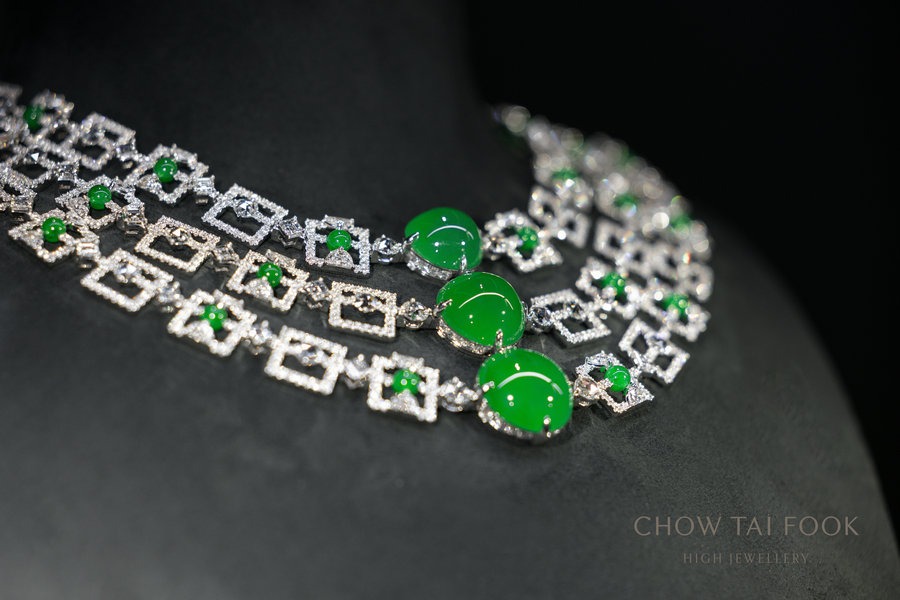Lives of iron forged in tribulation


Writing for the New York Daily News last May, Larry Lee, whose great-granduncle was among the laborers, said: "Before tracks could be placed, laborers built 15 tunnels through the solid shale and granite walls of the Sierra Nevada Mountain range, which rose to 7,000 feet (2,100 meters). Hung by ropes or suspended by baskets, Chinese workers chipped away at rock with hand-held picks. They planted dynamite charges and scrambled up the ropes before the explosions."
That scene is now on view at MOCA, in the form of a postcard painted by the Chinese American artist Jake Lee in 1963, nearly 100 years after the Chinese immigrant laborers performed their engineering miracle.
It was one of a dozen watercolors depicting Chinese in America between 1860s and 1900. The series was commissioned by the Chinese American restaurateur Johnny Kan, credited with popularizing authentic Chinese cuisine as a fine dining option, with Marilyn Monroe, Frank Sinatra and Dean Martin being regular patrons.
The effort by later generations of Chinese Americans to acknowledge the contribution of their forefathers was often met with resistance, said Eugene Moy, an amateur historian who sits on the boards of several participating organizations for the Gathering exhibition, including the Save Our Chinatown Committee in Riverside, California.
"Today, few are willing to recognize the fact that the city of Riverside would not exist if it had not been for the wealth generated through Chinese labor," he said, referring to the role of early Chinese immigrants in turning California into one of America's biggest agricultural states, a feat some historians have called the second Gold Rush.
"Chinese labor is no longer involved now, having been replaced by Mexican or Latino farm worker population," Moy said. "But back then the majority of those who plowed the American fields were Asian-Chinese, Japanese, Filipino, Korean. … Coming from the food-growing areas in southern China's Pearl River Delta, the Chinese immigrants took their rich knowledge in crop cultivation to California and elsewhere in the US."
A horseshoe at the MOCA exhibition offers a vivid example. Five times bigger than average, the horseshoe has an additional ring attachable to the standard shoe that would be worn by the animal. It was developed by the immigrant Chinese farmers to let the animal stand afloat and maneuver better on the area's marshy peat soil, soil whose potential they first recognized.
"Sadly, the life of many early Chinese settlers followed a similar pattern," Moy said. "They set foot on a piece of land, usually along the route of the Transcontinental Railroad, cultivated it and built a Chinatown on top of it, before they were being forced out and moved a few miles away, where they started up a second Chinatown, with no better guarantee for safety. Sometimes they stayed in place because they had nowhere else to go."
Both the Riverside site and the Sacramento River Delta site, where the large horseshoe was found, were testimony to such stories. Having endured the vicious mosquito bites and having built numerous drainage canals and levees to reclaim the land for farming, the Chinese settlers saw a fire destroy one of their towns in 1915. They moved a couple of kilometers north up the river, built a new town and named it Locke, the name of the landlord that serendipitously rhymes with a Chinese phrase meaning happy living.
For Gerry Low-Sabado, a fifth-generation Chinese fishing village descendant, that fire story is all too familiar. On May 16, 1906, most of the village in Pacific Grove, on Monterey Bay, was "mysteriously" burned down, he said. The Chinese tried to rebuild, but townspeople tore down what they built, and the military was called in to build a fence to keep them out.
"Eventually my great grandfather, who was considered part of the 'resistance', was the last man to leave the village site in 1907. After that, zip-no one talks about it," said Low-Sabado, whose ancestors crossed the Pacific in a junk with no engine and whose great grandmother was the first documented Chinese female born in the Monterey area.
A more discreet and deceptive tool of defense was a sword cane once carried around by a man named Ah Quin, known as the "unofficial mayor of Chinatown" in San Diego. The cane, on display in the museum and befitting a revered community leader, is capable of a lethal thrust once unsheathed.
However, discretion seemed to be a scarce trait: In the 1870s and 1880s, about 500 anti-Chinese riots broke out in the US. "Apart from California, there were very violent incidents in the mining communities or agricultural towns in Oregon, Idaho, Washington state, Wyoming, Nevada …where there was big competition for labor," Moy said. "But at the same time, a lot of antagonism towards the Chinese was based on race instead of economic competition."
In 1882, the infamous Chinese Exclusion Act, which banned all Chinese from entering the country unless they were businessmen, scholars and diplomats, was signed into law by a US president.
The act, the first immigration law that excluded an entire ethnic group, created numerous bachelor societies throughout America, whose members saw all hope of bringing their wives and children dashed.





































